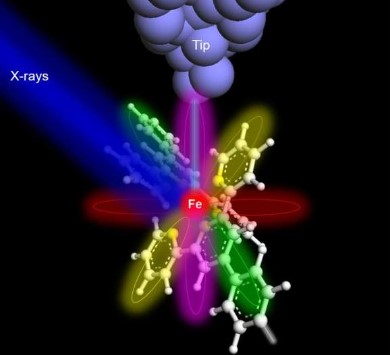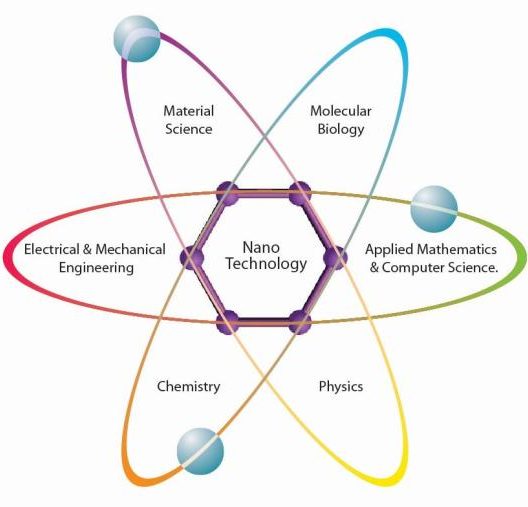
When X-rays (blue color) illuminate an iron atom (red ball at the center of the molecule), core-level electrons are excited. X-ray excited electrons are then tunneled to the detector tip (gray) via overlapping atomic/molecular orbitals, which provide elemental and chemical information about the iron atom. Credit: Saw-Wai Hla
Topics: Applied Physics, Instrumentation, Materials Science, Nanomaterials, Quantum Mechanics
A team of scientists from Ohio University, Argonne National Laboratory, the University of Illinois-Chicago, and others, led by Ohio University Professor of Physics, and Argonne National Laboratory scientist, Saw Wai Hla, have taken the world’s first X-ray SIGNAL (or SIGNATURE) of just one atom. This groundbreaking achievement could revolutionize the way scientists detect materials.
Since its discovery by Roentgen in 1895, X-rays have been used everywhere, from medical examinations to security screenings in airports. Even Curiosity, NASA’s Mars rover, is equipped with an X-ray device to examine the material composition of the rocks on Mars. An important usage of X-rays in science is to identify the type of materials in a sample. Over the years, the quantity of materials in a sample required for X-ray detection has been greatly reduced thanks to the development of synchrotron X-rays sources and new instruments. To date, the smallest amount one can X-ray a sample is in an attogram, which is about 10,000 atoms or more. This is due to the X-ray signal produced by an atom being extremely weak, so conventional X-ray detectors cannot be used to detect it. According to Hla, it is a long-standing dream of scientists to X-ray just one atom, which is now being realized by the research team led by him.
“Atoms can be routinely imaged with scanning probe microscopes, but without X-rays, one cannot tell what they are made of. We can now detect exactly the type of a particular atom, one atom-at-a-time, and can simultaneously measure its chemical state,” explained Hla, who is also the director of the Nanoscale and Quantum Phenomena Institute at Ohio University. “Once we are able to do that, we can trace the materials down to the ultimate limit of just one atom. This will have a great impact on environmental and medical sciences and maybe even find a cure that can have a huge impact on humankind. This discovery will transform the world.”
Their paper, published in the scientific journal Nature on May 31, 2023, and gracing the cover of the print version of the scientific journal on June 1, 2023, details how Hla and several other physicists and chemists, including Ph.D. students at OHIO, used a purpose-built synchrotron X-ray instrument at the XTIP beamline of Advanced Photon Source and the Center for Nanoscale Materials at Argonne National Laboratory.
Scientists report the world’s first X-ray of a single atom, Ohio University, Phys.org.
